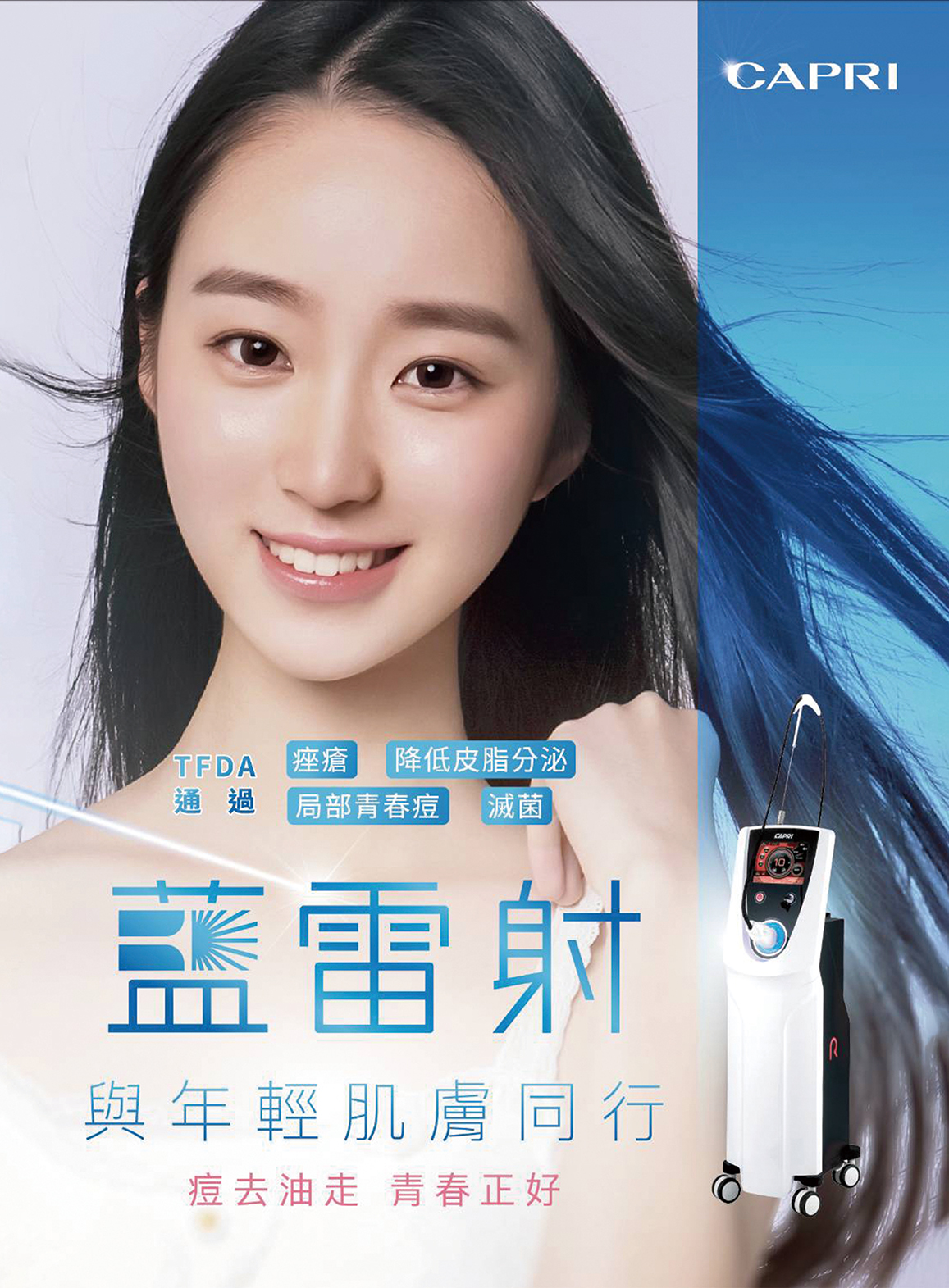Say Goodbye to Acne in Your Youth – The Causes of Acne and Blue Laser Treatment
Update Date:2025/03/05,
Views:41
Dr. Liu Sheng-Wen, Dermatology of Department
Acne is one of the most common skin conditions. Although it typically occurs during adolescence, it is not exclusive to young people and can also affect adults. It primarily appears on areas with a high concentration of sebaceous glands, such as the face, chest, and back. Facial acne, in particular, can be a source of distress and frustration for teenagers due to its impact on appearance. This is especially true for larger nodular or cystic acne, which can be painful and often leaves scars even after healing. Therefore, early and active treatment of acne is recommended to prevent long-term consequences.
The causes of acne.
The formation of acne primarily involves the following factors:
1. Abnormal follicular keratinization: Keratin is the outermost layer of dead cells in the epidermis. When keratinization is abnormal, these cells fail to shed properly, accumulating at the follicle opening and causing blockages.
2. Excessive sebum production: Hormonal changes after puberty stimulate the sebaceous glands to produce more oil. When pores are clogged, sebum cannot be discharged properly.
3. Bacterial overgrowth: Propionibacterium acnes (P. acnes) is a type of bacteria that resides on the skin. Clogged follicles create an environment conducive to its proliferation.
4. Inflammatory response: Bacteria and their secreted substances trigger an inflammatory reaction, leading to symptoms such as redness, swelling, pustules, and pain.
Acne Treatment
The principle of acne treatment is to target its underlying causes. Treatment options include topical medications, oral medications, and light-based therapies. The choice of treatment depends on the severity of acne, skin condition, and personal preference.
1. Topical Medications
1. Benzoyl Peroxide: Has antibacterial and exfoliating effects but can be irritating, causing a stinging sensation when applied.
2. Retinoids (e.g., Tretinoin): Promote exfoliation to reduce clogged pores and inflammation. However, excessive or improper use may cause redness and peeling.
3. Topical Antibiotics (e.g., Clindamycin): Help inhibit bacterial growth.
2. Oral Medications
1. Antibiotics (e.g., Doxycycline): Suppress bacterial growth. Common side effects include nausea, diarrhea, esophageal irritation, and photosensitivity. To prevent esophageal injury, the medication should be taken with plenty of water. Pregnant women and children under eight should avoid doxycycline.
2. Oral Isotretinoin: Helps exfoliate keratin, reduce inflammation, and suppress sebum production. Side effects include dryness of the skin, eyes, and lips. A temporary acne flare-up may occur in the first 1–3 months of treatment. Some patients may experience elevated blood lipids and liver enzyme abnormalities, requiring regular blood tests. Pregnant women must avoid isotretinoin, and pregnancy is strictly prohibited during and at least one month after treatment.
3. Hormonal Therapy (e.g., Oral Contraceptives): Suitable for women with acne flare-ups around their menstrual cycle or those with polycystic ovary syndrome (PCOS). It reduces sebum production by lowering androgen levels.
3. Light-Based Therapy
Blue Laser Treatment is a non-invasive therapy approved by Taiwan’s TFDA for treating acne and reducing sebum production. It is particularly suitable for individuals who cannot tolerate the side effects of traditional treatments, cannot take oral medications (e.g., pregnant or planning pregnancy), or prefer a drug-free option.
• Mechanism & Effectiveness: Blue laser therapy utilizes dual wavelengths of 1450nm and 450nm. The 1450nm wavelength delivers heat to the sebaceous glands, reducing sebum secretion, while the 450nm blue light kills Propionibacterium acnes. This treatment addresses both acne and excessive oil production without systemic side effects.
• Treatment Process: Patients typically feel only mild warmth during the procedure, and no anesthetic is required. There is minimal downtime, making it a gentle treatment option. Each session lasts approximately 15 minutes, and a course of three weekly treatments is recommended. Most patients experience noticeable improvement after completing the course, with effects lasting 3–6 months, depending on individual skin type and skincare routine.
Conclusion
Acne not only affects appearance, but severe acne can also leave scars that are difficult to erase. Beyond traditional topical and oral medications, there is now a new generation of blue light laser therapy. Patients with acne-prone skin are advised to seek early and appropriate treatment, ensuring that youth doesn't leave lasting "marks."
